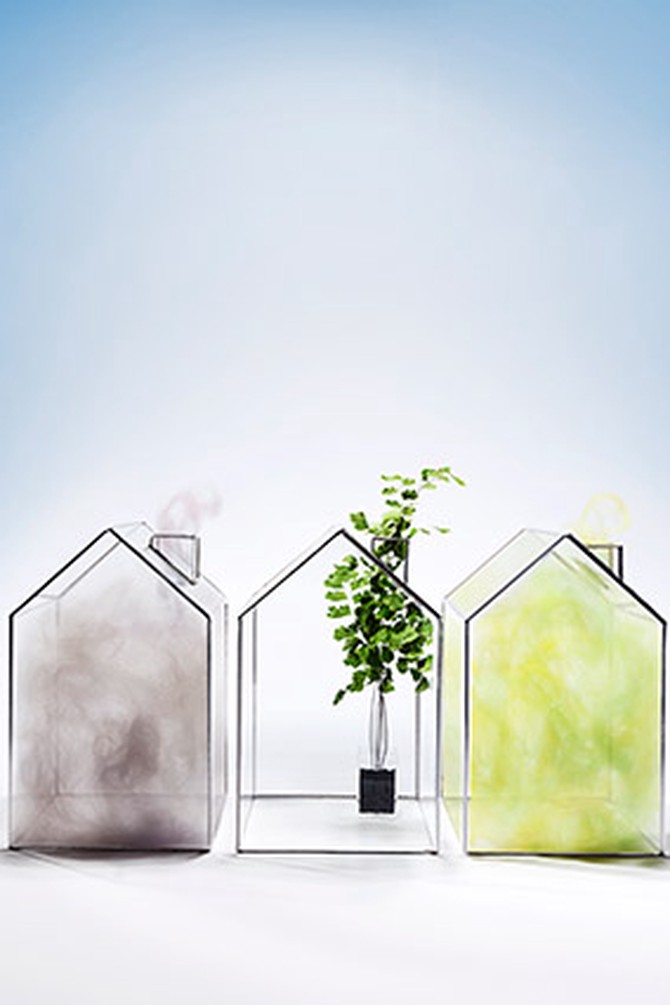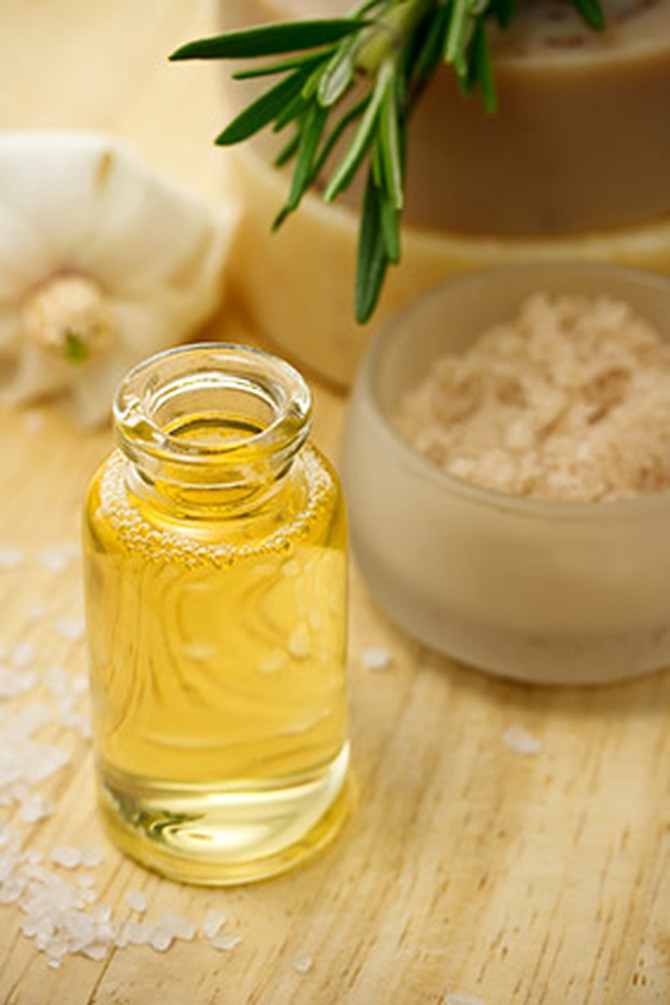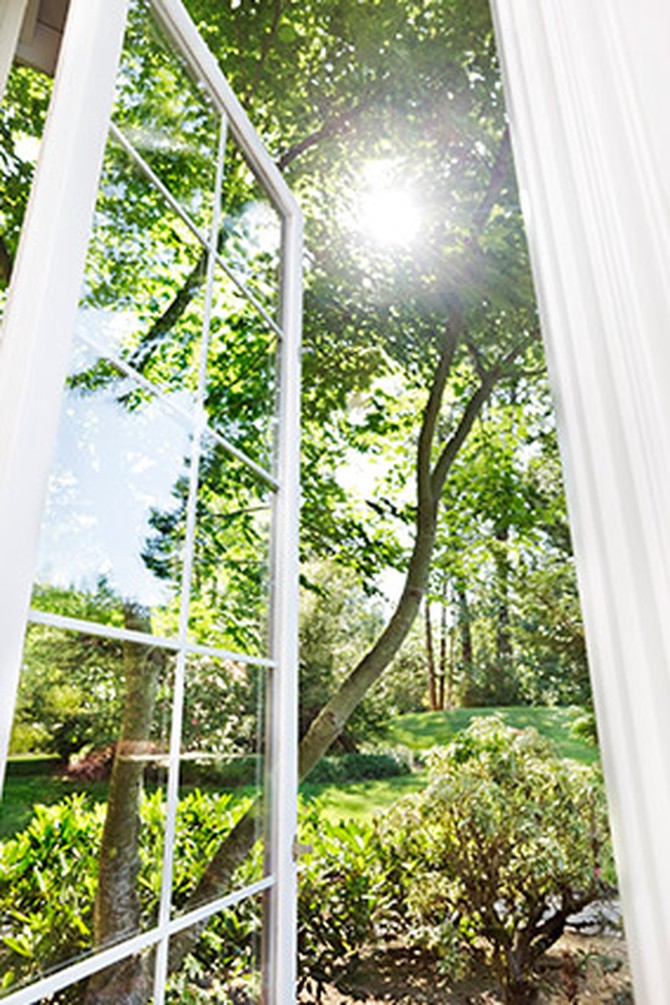Is Your Home Making You Sick?
An airtight house might benefit your heating bill, but it can wreak havoc on your health.
By Nancy Kalish

Photo: Mauricio Alejo
Exhaust fumes, smog, secondhand smoke: When you step outside, you expect to be exposed to unhealthy elements lurking in the air. But if you think staying indoors is automatically safer, think again. Your home can be up to five times more polluted with common organic chemicals than outdoor air, according to the Environmental Protection Agency (EPA). And in winter, as you keep windows locked tight to seal in warmth, you could be inhaling a concentrated cocktail of potentially dangerous chemicals found in products like air fresheners and cleaning supplies.
If you'd like to breathe easier, consider these hassle-free clean-air tips.
If you'd like to breathe easier, consider these hassle-free clean-air tips.

Photo: Mauricio Alejo
Detoxify the Way You Clean
The cleansers, sprays, and stain removers you use to keep your home spotless are major sources of indoor toxins. A 2012 guide of more than 2,100 common cleaning products by the Environmental Working Group (EWG), a nonprofit research organization, found that 53 percent contained chemicals like sodium or potassium hydroxide, which may damage the lungs (many oven cleaners have high levels), while 20 percent include carcinogens like formaldehyde. But don't rush out and buy everything you see with a "nontoxic" or "green" label. "Unfortunately, most cleaning products don't list all their ingredients, and even some with labels like 'all natural' still contain harmful substances," says Rebecca Sutton, PhD, an environmental chemist and contaminant specialist with the EWG. Look for cleaners with the EPA's Design for the Environment label—a seal of approval given to products that contain only the safest levels of chemicals needed to get the job done.

Photo: Thinkstock
Be Suspicious of Scents
No one wants a musty home, but some air fresheners contain phthalates (multipurpose chemicals that in this case are responsible for dispersing a scent throughout a room) and synthetic fragrances that may disrupt the endocrine system's control of hormones, potentially leading to reproductive issues and possibly even breast cancer. A 2012 study published in the journal Environmental Health Perspectives, which looked at chemicals found in more than 200 common household products ranging from laundry detergent to hand sanitizers, found that air fresheners were among the highest in levels of synthetic fragrances. You're better off filling your house with natural scents, like real rosemary.

Photo: Thinkstock
Crack a Window, Already!
If you're relying on air purifiers or filters to keep your airspace clean, know this: They can be great at eliminating small particles such as smoke and dust but not as effective at removing harmful gases. Before you cringe at what opening your windows will do to your heating bill, consider what it can do for your health. "Ventilation is the best way to rid your home of chemicals, and it's well worth the sacrifice in energy efficiency," says Junfeng Zhang, PhD, professor of environmental and global health at the University of Southern California's Keck School of Medicine. "I open my windows for ten minutes several times a day to increase air circulation. If you live in a high-traffic area, do this at night."

Photo: Thinkstock
Go Green with Greenery
There's no way to keep your home entirely pollutant-free, but plants can help reduce your exposure. After testing methods to purify the air inside space stations, a former NASA scientist has shown that microorganisms on the leaves and roots of certain common houseplants help remove chemicals like formaldehyde and ammonia from the air. Boston ferns, pot mums, and lady palms are among the best at breaking down toxins, which means a little greenery can spruce up your space—and your health.
Nancy Kalish is a certified health coach. She blogs at TheOrganicFanatic.org.
Next: The dangers of air pollution—and how to protect yourself
Nancy Kalish is a certified health coach. She blogs at TheOrganicFanatic.org.
Next: The dangers of air pollution—and how to protect yourself
From the February 2013 issue of O, The Oprah Magazine
As a reminder, always consult your doctor for medical advice and treatment before starting any program.

